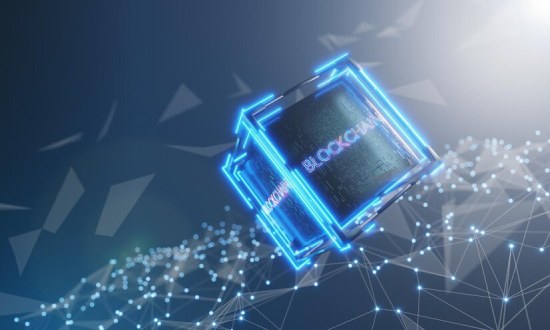-
The Polygon blockchain has emerged as one of the most sought-after blockchain app development services for addressing the scalability challenges of Ethereum. Its ecosystem offers innovative tools and features that enhance blockchain adoption for businesses and developers. This article provides a comprehensive, technical, and engaging look at Polygon's architecture, features, and applications in the B2B landscape.
What is Polygon Blockchain?
Polygon, formerly known as Matic Network, is a Layer 2 scaling solution for Ethereum. It transforms Ethereum into a full-fledged multi-chain system, often referred to as "Ethereum's Internet of Blockchains." By providing off-chain scalability, Polygon reduces transaction costs and improves processing speed while leveraging Ethereum's robust security and ecosystem.
Also, Read | How to Deploy a Smart Contract to Polygon zkEVM Testnet
Key Features of Polygon Blockchain
Scalability
Polygon achieves scalability through its Layer 2 solutions, including Plasma chains and sidechains. These technologies offload transactions from the Ethereum mainnet, increasing throughput and reducing congestion.
Interoperability
Polygon enables seamless interaction between Ethereum-compatible blockchains, fostering a connected ecosystem for decentralized applications (dApps).
Low Transaction Costs
The network's high throughput significantly reduces transaction costs, making it an attractive choice for developers and businesses.
Developer-Friendly
Polygon offers tools like Polygon SDK, a modular and flexible framework for building dApps and blockchains. Its compatibility with Ethereum's EVM (Ethereum Virtual Machine) ensures a smooth transition for developers.
High Security
Polygon inherits Ethereum's security while implementing its own mechanisms for additional protection.
Robust Ecosystem
With hundreds of dApps, including DeFi platforms, NFT marketplaces, and gaming applications, Polygon has established itself as a prominent player in the blockchain space.
Also, Explore | How Polygon AggLayer Emerges to be the Hub for Ethereum L2s
Technical Architecture
Polygon's architecture consists of three primary layers:
Ethereum Layer
This layer leverages Ethereum's base layer for security and finality. Polygon relies on Ethereum for asset staking, checkpoints, and decentralized settlement.
Security Layer
This optional layer provides additional security features through external validators, enhancing trust.
Polygon Networks Layer
The heart of the Polygon ecosystem, this layer consists of independent blockchain networks that provide scalability and interoperability. It supports two major types of chains:
Standalone Chains: Independent chains with their own security model.
Secured Chains: Chains that use a "security-as-a-service" model, relying on Ethereum or other validators.
Execution Layer
This layer handles the execution of smart contracts and transactions, ensuring smooth interaction between users and dApps.
How Polygon Benefits Businesses
Cost-Effective Operations
Businesses can save on transaction fees and infrastructure costs by using Polygon, making it ideal for industries like supply chain, gaming, and DeFi.
Faster Transactions
With high-speed transactions, Polygon allows companies to create seamless user experiences, even for high-demand applications.
Custom Blockchain Development
Polygon SDK enables businesses to design tailor-made blockchains that cater to specific use cases, ensuring flexibility and scalability.
Enhanced NFT Ecosystem
Polygon's low fees and environmental sustainability make it a preferred choice for NFT projects, attracting enterprises looking to tap into digital collectibles.
Also, Discover | Exploring Diverse Use Cases of Polygon Blockchain
Use Cases of Polygon in the B2B Space
Decentralized Finance (DeFi)
Polygon hosts a variety of DeFi applications, including Aave and Curve, offering businesses an avenue to explore lending, staking, and yield farming with reduced fees.
Supply Chain Management
Polygon enables real-time tracking and verification of supply chain activities, enhancing transparency and reducing fraud.
Gaming and Metaverse
Businesses can leverage Polygon for creating scalable gaming platforms and virtual worlds, ensuring cost-efficiency and high performance.
NFT Marketplaces
Polygon powers several NFT platforms like OpenSea and Zed Run, allowing enterprises to create and trade digital assets effortlessly.
Enterprise Solutions
Polygon's modular architecture supports the development of private and consortium blockchains for specific business needs, such as data sharing and authentication.
Comparison: Polygon vs. Ethereum
Feature Ethereum Polygon Transaction Speed ~15 TPS Up to 65,000 TPS Transaction Cost High Minimal Scalability Limited Highly Scalable Ecosystem Established Expanding Rapidly Security Native Inherits Ethereum + Custom Security Also, Check | Polygon zkEVM | For Efficient Scalability of Your dApp
FAQs
1. What makes Polygon different from Ethereum?
Polygon is a Layer 2 scaling solution for Ethereum, offering faster and cheaper transactions while retaining compatibility with the Ethereum ecosystem.
2. How does Polygon ensure security?
Polygon uses Ethereum's base layer for security and adds its own optional security layer with external validators.
3. Can I migrate my Ethereum dApp to Polygon?
Yes, Polygon is EVM-compatible, enabling seamless migration of Ethereum-based dApps.
4. What industries benefit the most from Polygon?
Industries like finance, gaming, supply chain, and digital art (NFTs) benefit significantly due to Polygon's scalability and low costs.
5. Is Polygon sustainable?
Polygon's low energy consumption and efficient architecture make it more sustainable compared to traditional blockchain solutions.
Conclusion
Polygon blockchain is revolutionizing the way businesses approach blockchain technology by addressing the critical challenges of scalability, interoperability, and cost. Its developer-friendly tools and robust architecture make it a cornerstone of blockchain innovation. For B2B enterprises, Polygon offers unmatched opportunities to create scalable and efficient decentralized solutions, paving the way for widespread blockchain adoption. If you are looking to build your project leverging the Polygon Blockchain, connect with our skilled blockchain developers to get started.
Ready to build on Polygon? Check out our in-depth guide on How to Build a dApp on Polygon and take your blockchain project to the next level.

Our Offices
INDIA
Emaar Digital Greens, Sector 61,
Gurugram, Haryana
122011.
Welldone Tech Park,
Sector 48, Sohna road,
Gurugram, Haryana
122018.















